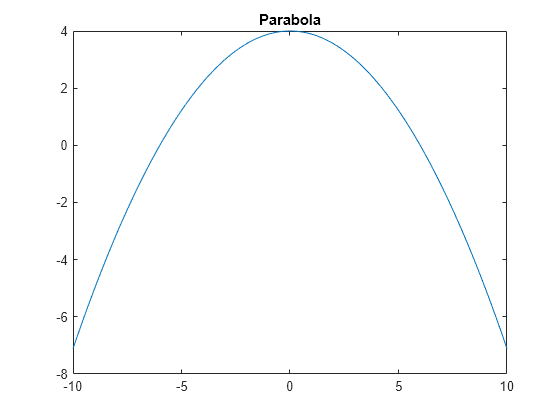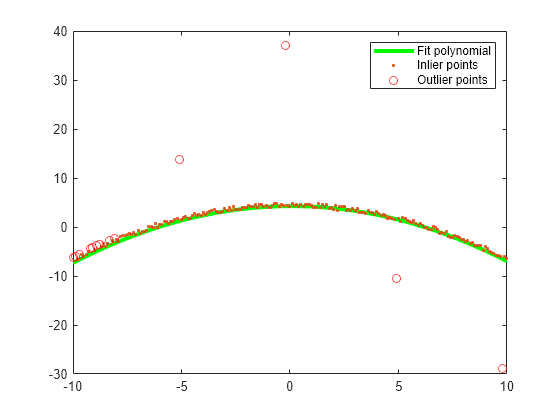fitPolynomialRANSAC
Fit polynomial to points using RANSAC
Syntax
Description
P = fitPolynomialRANSAC(xyPoints,N,maxDistance)P, by sampling a small set of points given in
xyPoints and generating the Nth
polynomial fits. The fit that has the most inliers within
maxDistance is returned. If a fit cannot be found, then
P is returned empty. The function uses the M-estimator
sample consensus (MSAC) algorithm, a variation of the random sample consensus
(RANSAC) algorithm to fit the data.
[ returns a logical
array, P,inlierIdx]
= fitPolynomialRANSAC(___)inlierIdx, that specifies the indices
for data points that are inliers to the fit polynomial based on maxDistance.
Use the input arguments from the previous syntax.
[___] = fitPolynomialRANSAC(___,Name=Value)
specifies options using one or more name-value arguments in addition to any
combination of arguments from previous syntaxes. For example,
(MaxNumTrials=2000) sets the maximum number of random trials
to 2000.
Examples
Input Arguments
Name-Value Arguments
Output Arguments
References
[1] Torr, P. H. S., and A. Zisserman. "MLESAC: A New Robust Estimator with Application to Estimating Image Geometry." Computer Vision and Image Understanding. Vol. 18, Issue 1, April 2000, pp. 138–156.
Version History
Introduced in R2017a


